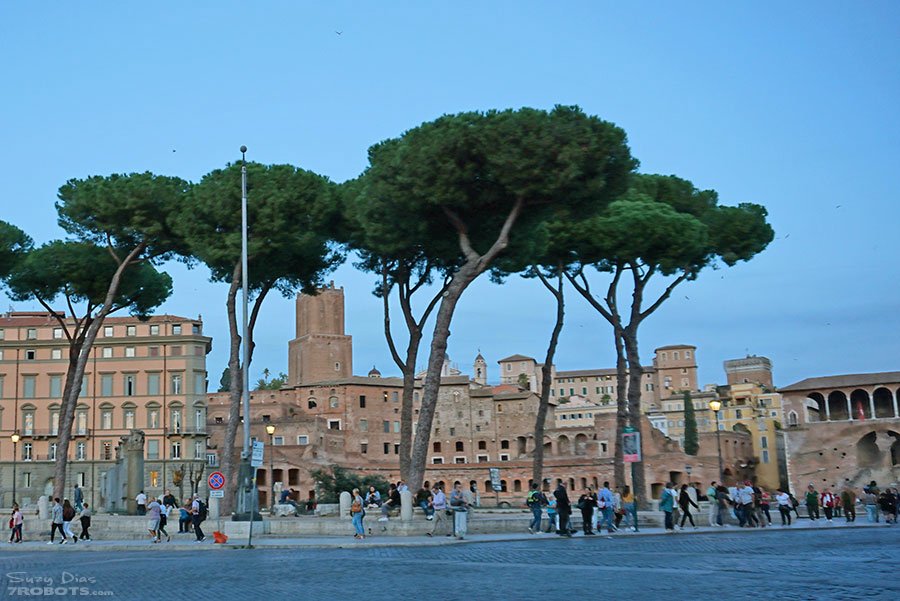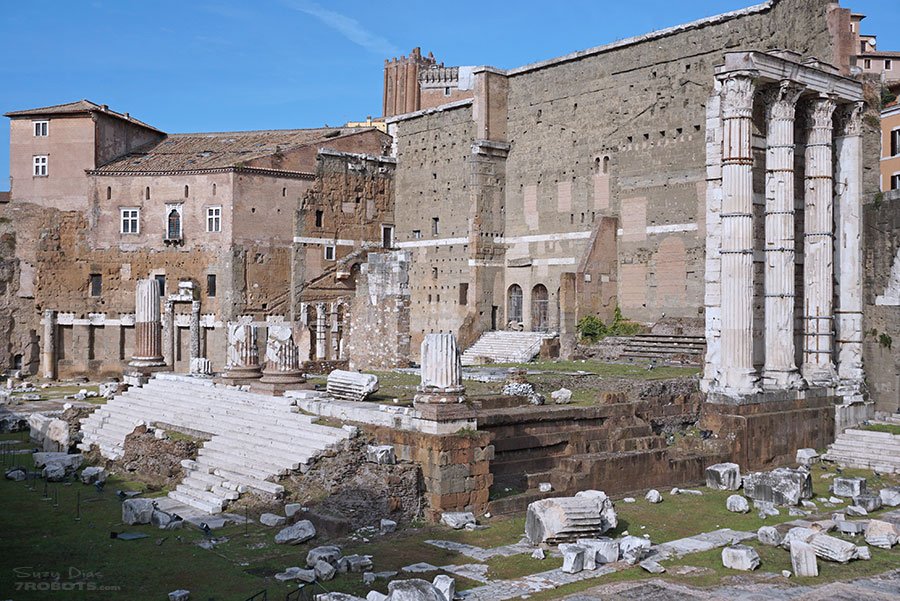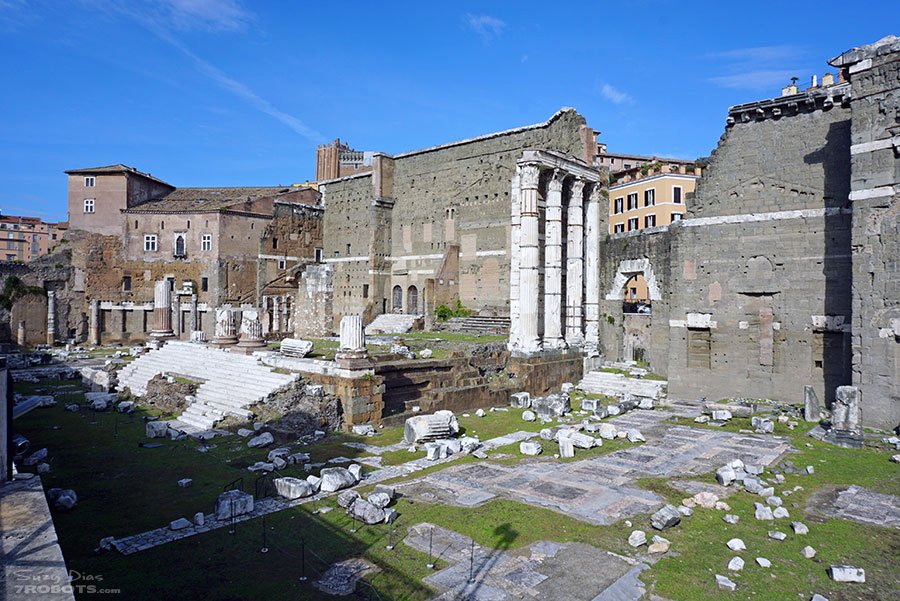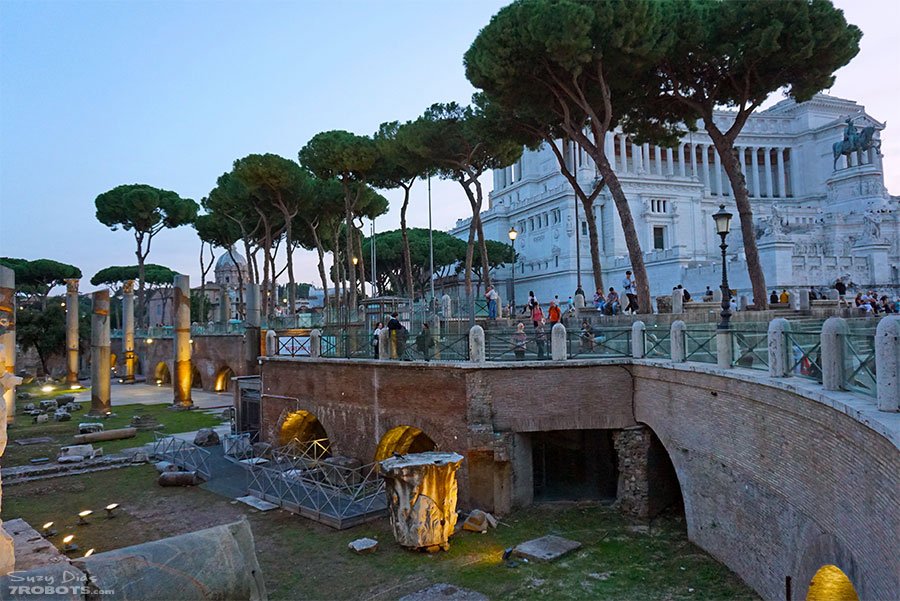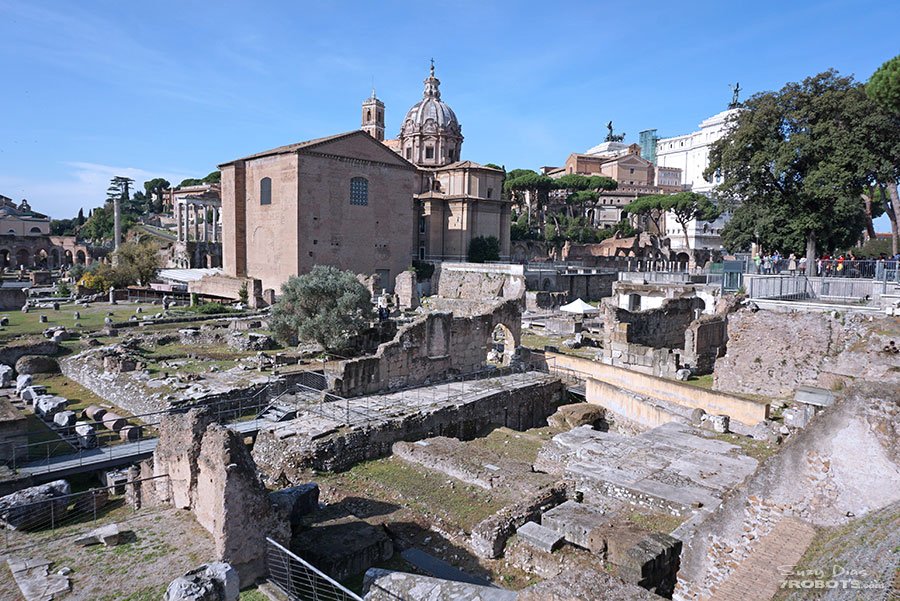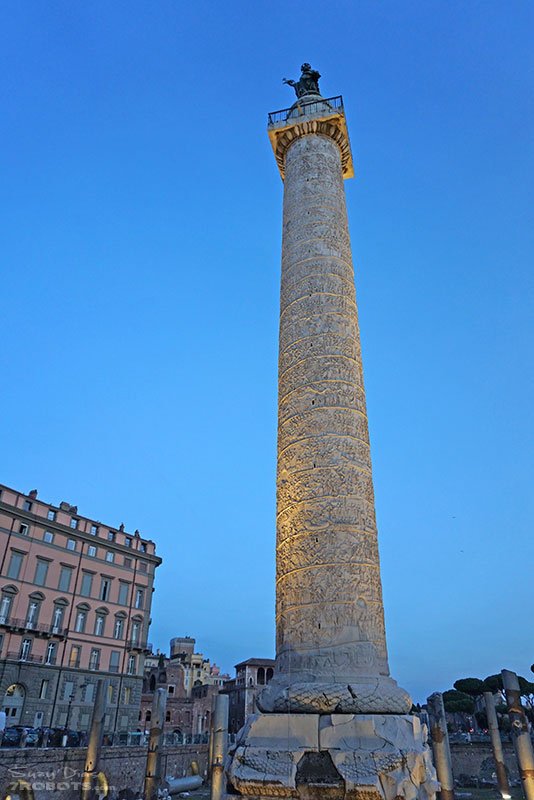Roman Forum
“For centuries the Forum was the center of day-to-day life in Rome: the site of triumphal processions and elections; the venue for public speeches, criminal trials, and gladiatorial matches; and the nucleus of commercial affairs. Here statues and monuments commemorated the city’s great men. The teeming heart of ancient Rome, it has been called the most celebrated meeting place in the world, and in all history. Located in the small valley between the Palatine and Capitoline Hills, the Forum today is a sprawling ruin of architectural fragments and intermittent archaeological excavations attracting 4.5 million or more sightseers yearly.” [read more…]
☆ For all of the Roman Holiday posts, click here.
Romulus and Remus
“According to a widely accepted legend, ancient Rome was founded by brothers Romulus and Remus in 753 B.C. After a rising conflict, Romulus killed Remus, became king and named Rome after himself.
The traditional story also credits Romulus with starting an alliance with his rival, Titus Tatius, and making the site of the Roman Forum a neutral meeting zone.
At first, the Forum essentially served as a marketplace for day-to-day shopping. Over time, it became much more versatile and functional, as public affairs were held in the area.
Historians estimate that the rise of public events in the Roman Forum first took place around 500 B.C., when the Roman Republic started.
The Forum gradually developed, progressed and expanded over many centuries. Statues, arches, basilicas and other buildings were constructed to accommodate the gatherings.
Around the reign of Julius Caesar, the Forum became overcrowded. Caesar is credited with building a new forum, off to the side of the original, to offer more space. Later, the Emperor Augustus also added on to the area.” [read more…]
The heart of Rome
“Filled with grandiose temples, bustling marketplaces and imposing civic buildings, the Forum was the beating heart of ancient Rome. Originally a swampy Etruscan burial ground, the site was drained in the 7th century BC and grew into a monumental demonstration of the power and splendour of the Empire.” [read more…]
Home to the tomb of Romulus
“The story of Romulus, who founded Rome after killing his twin brother Remus, is a tangle of myth, legend and folklore, so whether or not a real, historical figure ever existed is unclear. Believe the ancient Romans, though, and Romulus is buried in the Forum. The Lapis Niger, a large piece of black marble, marks his grave – that, or the spot where he was murdered by the Senate.”
The Vestal Virgins lived there
“Vestal Virgins were chosen as priestesses between the ages of six and ten, and sworn to celibacy for 30 years. It was their duty to keep the sacred fire in the Temple of Vesta burning. The fire was believed to be linked to the fortunes of ancient Rome, so punishment was severe if it ever went out – vestals who neglected their duty would be beaten or flogged. Those who broke their vows of celibacy were buried alive.”
Julius Caesar was cremated there
“The Temple of Caesar, built after the politician’s assassination on the steps of the Theatre of Pompey, is sometimes referred to as the site of Caesar’s grave, but is actually the spot where he was cremated in 44 BC. Now, the temple is in ruins but people still leave flowers and tributes behind in honour of Rome’s most famous citizen.” [read more…]
Trajan’s Column
“In back-to-back wars fought between A.D. 101 and 106, the emperor Trajan mustered tens of thousands of Roman troops, crossed the Danube River on two of the longest bridges the ancient world had ever seen, defeated a mighty barbarian empire on its mountainous home turf twice, then systematically wiped it from the face of Europe.
Trajan’s war on the Dacians, a civilization in what is now Romania, was the defining event of his 19-year rule. The loot he brought back was staggering. One contemporary chronicler boasted that the conquest yielded a half million pounds of gold and a million pounds of silver, not to mention a fertile new province.
The booty changed the landscape of Rome. To commemorate the victory, Trajan commissioned a forum that included a spacious plaza surrounded by colonnades, two libraries, a grand civic space known as the Basilica Ulpia, and possibly even a temple. The forum was “unique under the heavens,” one early historian enthused, “beggaring description and never again to be imitated by mortal men.”
Towering over it was a stone column 126 feet high, crowned with a bronze statue of the conqueror. Spiraling around the column like a modern-day comic strip is a narrative of the Dacian campaigns: Thousands of intricately carved Romans and Dacians march, build, fight, sail, sneak, negotiate, plead, and perish in 155 scenes. Completed in 113, the column has stood for more than 1,900 years.” [read more…]
Related Links
• 11 Things You Didn’t Know About the Roman Forum
• Trajan’s Amazing Column | National Geographic
